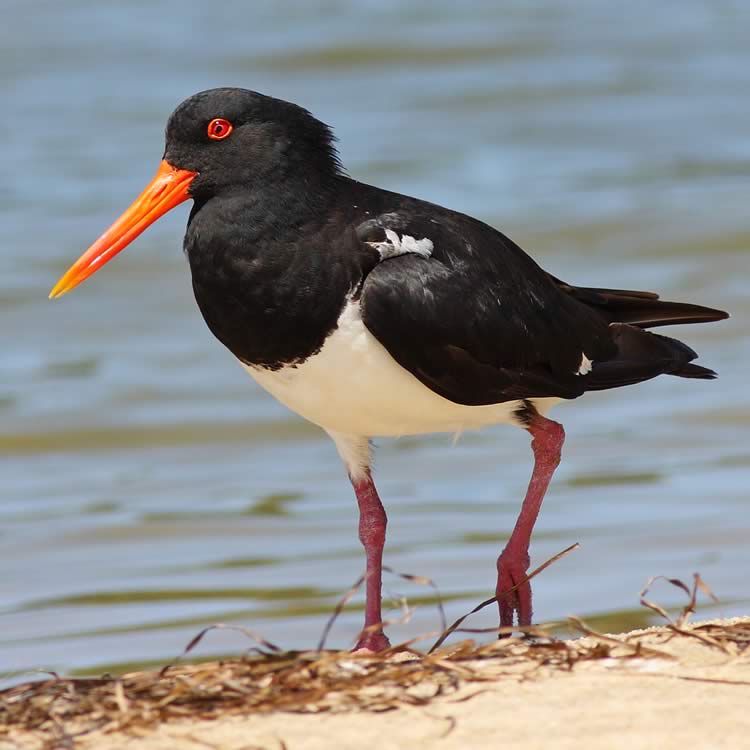Pied oystercatcher

Community type
Habitat type
The most common year-round shorebird in the tidal flats of the lower Derwent Estuary, the pied oystercatcher is easily recognisable with its black and white plumage, and long red beak and legs. Pied oystercatchers feed on exposed tidal flats by probing the mud to reach polychaete worms and bivalves. They also occur along the rocky shores of the mid and upper estuary, where they feed on barnacles, mussels and oysters attached to the rocks. The number of pied oystercatchers roosting at Lauderdale has more than tripled since the 1980s to an average of more than 270 birds by 2000.
The breeding season runs for around 6 months from September to February. Birds pair in their territories by September, egg laying peaks in October. Disturbance can affect shorebirds by raising energetic costs, restricting access to foraging areas, reducing available foraging time, displacing individuals to poorer feeding areas, enhancing predation risk and lowering reproductive success and adult survival.
